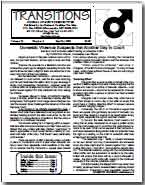 The feminist movement is working to tackle misogyny and its many harmful consequences, but should it address misandry, the male equivalent, too? Photograph: Tim Wimborne/Reuters
The feminist movement is working to tackle misogyny and its many harmful consequences, but should it address misandry, the male equivalent, too? Photograph: Tim Wimborne/Reuters
It’s difficult to deny that women suffer more than men as a result of their gender, and highlighting the myriad ways in which this happens is one of the cornerstones of modern feminism – which is currently enjoying a revival in the UK and elsewhere.
But justice isn’t a relative concept. If it were, we could suggest we should care less about racism against black people just because Asian people in this country are more likely to be victims of racially-motivated hate crime.
Obviously that’s nonsense. But so might be ignoring issues that affect men more severely than women just because women, overall, have it worse.
Delving into the data reveals a surprising array of areas in which men might have the hardest time. Here’s six worth thinking about:
Domestic abuse
The home has long been the focus of feminist analysis as a realm in which men are able to exert their power over women. That may be true, but the statistics on domestic abuse in marriages may well challenge your assumptions. 3.4% of married women reported a case of domestic abuse over the past year. The proportion of men? 3.4%.
Married men and women were also equally likely to be victims of non-sexual family abuse, while for partner abuse and stalking, a greater proportion of men were victims than women. Given that men are less likely than women to report domestic abuse, those figures are also likely to be underestimates.
For single people, cohabitees, and divorcees, we should note, women report significantly higher levels of abuse than men.
Crime
There are far more men than women in prison. One explanation for this is simply that they are inherently more prone to violence, crime or drug-use.
But that attitude might conceal important facts, or even alternative explanations. 29% of male first-time offenders were sentenced to custody. For women, that figure was 17%. Men have a 62% chance of being bailed, while for women that figure is 80% and on average men serve 53% of their sentence but women serve 5% less than that.
The average length of the sentence, whatever the plea, also suggests that there may be some issues in the criminal justice system. Once in prison, men are likely to continue to suffer discrimination. A much-publicised scheme addressing the need to take away prisoner privileges applies only to men.
Employment
The focus on the persistent pay gap in this country is crucial, but it also obscures other important gender phenomena. Among these is fact that men are 20 times more likely to have a fatal injury at work than women.
Men are also more likely to be made redundant and less likely to be re-employed than women. Note: these statistics are compiled for each gender – so the differences can’t be solely attributed to the differences in male/female employment.
Education
The gap between men and women applying to, and entering, university is growing.
Claims that men are more inclined to go for jobs or apprenticeships aren’t necessarily borne out in fact – each year since 2010, more women than men have started apprenticeships.
Even if the idea that men chased vocational qualifications were true, not continuing higher education continues to affect the average Brits’ long-term prospects.
There are other important factors at play here. One study found that by the age of four, girls think they are more clever, hard-working and successful than their male classmates. By the age of seven or eight, boys come round to sharing the same belief.
The reasons cited included feminist influence on girls’ self perception, boys’ fears of being labelled as ‘feminine’ for taking a great interest in academic work, and crucially, teachers’ lower expectations of boys than of girls.
Homelessness
It’s hard to track down official statistics on homelessness that take account of gender. But in 2011 the housing charity Crisis found that 84% of the hidden homeless were male. And the latest CHAIN figures suggest that 9 out of 10 people sleeping rough are male.
According to Mankind Initiative in UK refuges or safe houses, there are 33 spaces dedicated to male victims of domestic violence (of which 18 are for gay males only), compared to around 4,000 spaces reserved for females.
Suicide
Mental health is an extremely complex and much neglected area of medicine. Sadly, one of the most quantifiable aspects of it is simple suicide statistics. For every single age group between 2006 and 2010, men were significantly more likely than women to take their own lives. There’s a basic question that this raises: if those rates were the other way around, would they attract feminist attention?
What do you make of this data – and what else could we look at? Let us know below.
Download the data
• DATA: download the full spreadsheet
Source: The other gender divide: where men are losing out (http://www.guardian.co.uk/news/datablog/2013/may/07/men-gender-divide-feminism)


